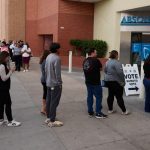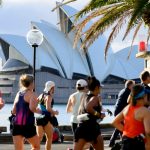As early voting came to a close in Nevada, many of the state’s most veteran pollsters, pundits and political operatives — no strangers to close elections and their accompanying jitters — are finding it uniquely difficult to predict what happens next.
Republicans, thrilled with their surprise early voting edge, say they are well on their way to making former President Donald J. Trump the first Republican to win the state since 2004. Democrats agree that Republicans have seized an unusual and anxiety-inducing advantage, but insist that their prized organizing machine will put Vice President Kamala Harris over the top.
But what’s making this presidential election different is the sheer number of voters who don’t officially identify with either party. Thanks to the state’s relatively new automatic voter registration law, nonpartisan voters became Nevada’s largest voting bloc in 2022, outpacing both Democratic and Republican registrations.
Figuring out who those voters are, and how or if they will cast a ballot, has been a crucial challenge for the campaigns scrambling to find and sway those last few persuadable people. Changes in voting patterns wrought by the pandemic four years ago are also throwing prognosticators for a loop.
“The Achilles’ heel of early vote analysis is that it’s really difficult to make cycle-to-cycle comparisons,” said Adam Jentleson, who was a senior aide to Senator Harry Reid of Nevada, the longtime Democratic leader, “and that has never been more true than in this cycle.”
All of those factors combined mean “you are flying blind,” he added.
The race is tied, according to The New York Times’s polling average. Both Mr. Trump and Ms. Harris have visited Nevada multiple times, emphasizing that every ballot will make a difference.
The New York Times









